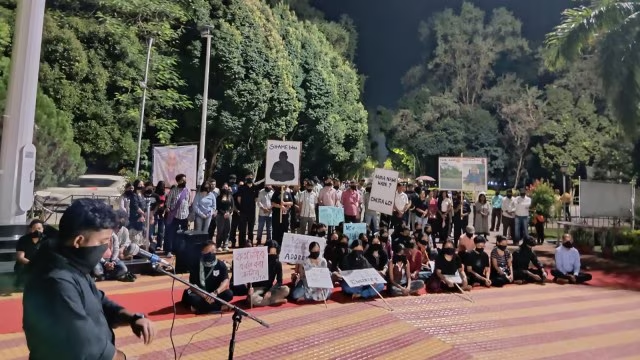The Indian Space Research Organisation (ISRO) has said that the temporary mini-moon, which will orbit Earth for 53 days beginning Sep 29, has a Hindu mythology connection.
The asteroid, or mini-moon called 2024 PT5 was discovered on Aug 7 by the Asteroid Terrestrial-impact Last Alert System (ATLAS), a NASA-funded automated system to monitor near-earth objects.

The unique thing about the asteroid is that it also has a connection to the Hindu epic Mahabharata. In a report published in Research Notes of the American Astronomical Society (RNAAS), astronomers say that the orbital properties of 2024 PT5 resemble that of asteroids that come from the Arjuna asteroid belt, "a sparsely resonant population of small NEOs."
Dr Anil Kumar, head of ISRO's Network for Space Objects Tracking and Analysis (NETRA) has also confirmed that the mini-moon is part of the Arjuna Asteroid grouping. The asteroid is just 10 meters in diameter and will be undetectable by the naked eye.
NETRA is monitoring the movement of 2024 PT5 which will orbit Earth for almost two months before breaking away from the elliptical force of the Earth on November 25.
It has also been confirmed that the asteroid will not collide with Earth. The 'Arjuna' is a special group of asteroids in the solar system which was discovered back in 1991 by Astronomer Robert H McNaught. He discovered an asteroid '1991 VG' at the Siding Spring Observatory in Australia on November 1 of that year.
The name 'Arjuna' was chosen by him inspired by the character in the Hindu epic Mahabharata. It was officially approved by the International Astronomical Union (IAU).

Just like Arjuna, who was known for his excellent archery skills and bravery, the name reflects the asteroid group's clean passage through the solar system.
Carlos de la Fuente Marcos and Raul de la Fuente Marcos, the astronomers who authored the RNAAS report said, “Near-earth objects (NEOs) that follow horseshoe paths, and approach our planet at close range and low relative velocity, may undergo mini-moon events in which their geocentric energy becomes negative for hours, days or months, but without completing one revolution around Earth.”
The astronomers have also said this is not the first time a mini-moon will appear around the Earth as such phenomena have occurred in the past in years 1997, 2013, and 2018.













